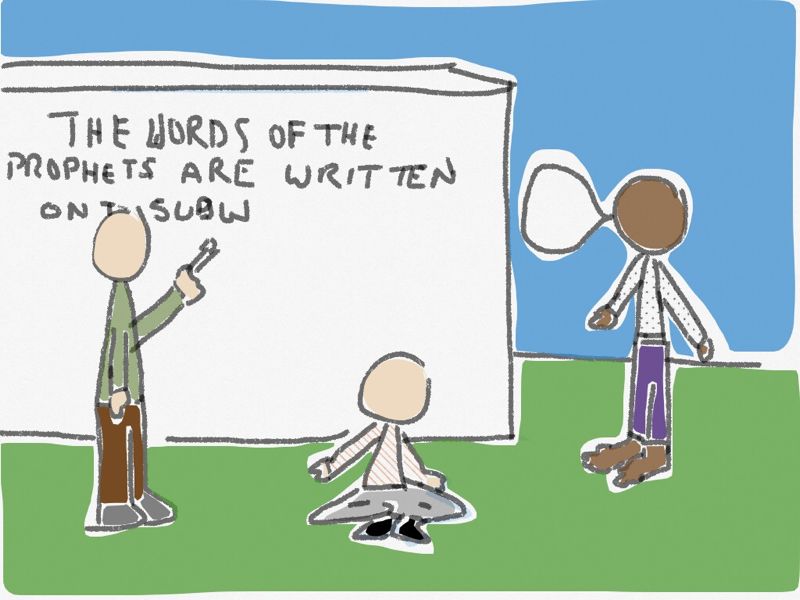41

Andrew Carnegie, Bill Gates and Jamie Dimon would never have expected their successors to be poets, street philosophers and found-object artists, but so it came to be. The Hyper-Industrial Age was different, not what people expected.
There was no revolution, just widespread ennui. Capitalism collapsed quickly and quietly like communism before it. Both systems died from lost credibility and diminished efficacy. No support remained. The dislocations were so great that even passive players like the American people could no longer keep up their end of the charade.
The fears of the “haves” consolidating power and permanently impoverishing everyone else never materialized. Neither did a leftist revolt overthrowing the old order and establishing a dominance by labor.
Instead, as we all now know, the reduced need for labor resulted in a severely reduced work week and a guaranteed minimum income. Automation produced wealth, and people found more time and energy and inclination to think and create. The one thing that could not be automated was the true expression of the human experience.
And so the Hyper-Industrial Age is a renaissance of the arts. Corporations are dead and creators bloom.
It was in this atmosphere that Ernie Fleming, the renowned poet emerged. Few people knew they loved poetry until his iconic odes appeared on unused public walls. He not only picked the right words, he displayed them with a artful air.
New Socrates was an even more unlikely figure. Formerly a mid-level executive, when the world changed he ditched the shoes and started walking the streets of Atlanta, gathering a group of followers and onlookers. They discussed, questioned, observed and tried to explain. His talks were never filmed—he asked not to be videotaped—but transcriptions and photos were widely distributed by a woman who dubbed herself New Plato.
Bertrand Fox had been collecting items from the pre-digital years for sometime before he knew what to do with them. His miniature dioramas constructed from found objects are now found—randomly—throughout the country, paying homage to our analog past.
The place of these three titans seemed secure.
Then, the defacing began. This was a disconcerting development in a near-paradise world. Was it a modern Basquiat, adding his own commentary to the art of others? Whoever was doing it had a digital theme. Early computer chips and circuit boards were added to Bertrand Fox’s dioramas. Disturbing but fascinating questions about artificial intelligence appeared at New Socrates meeting places. Competing poems written using an early digital font were found next to many of Ernie Fleming’s works.
The culprit was finally caught on camera. It was a robot. A new competing culture was emerging.
